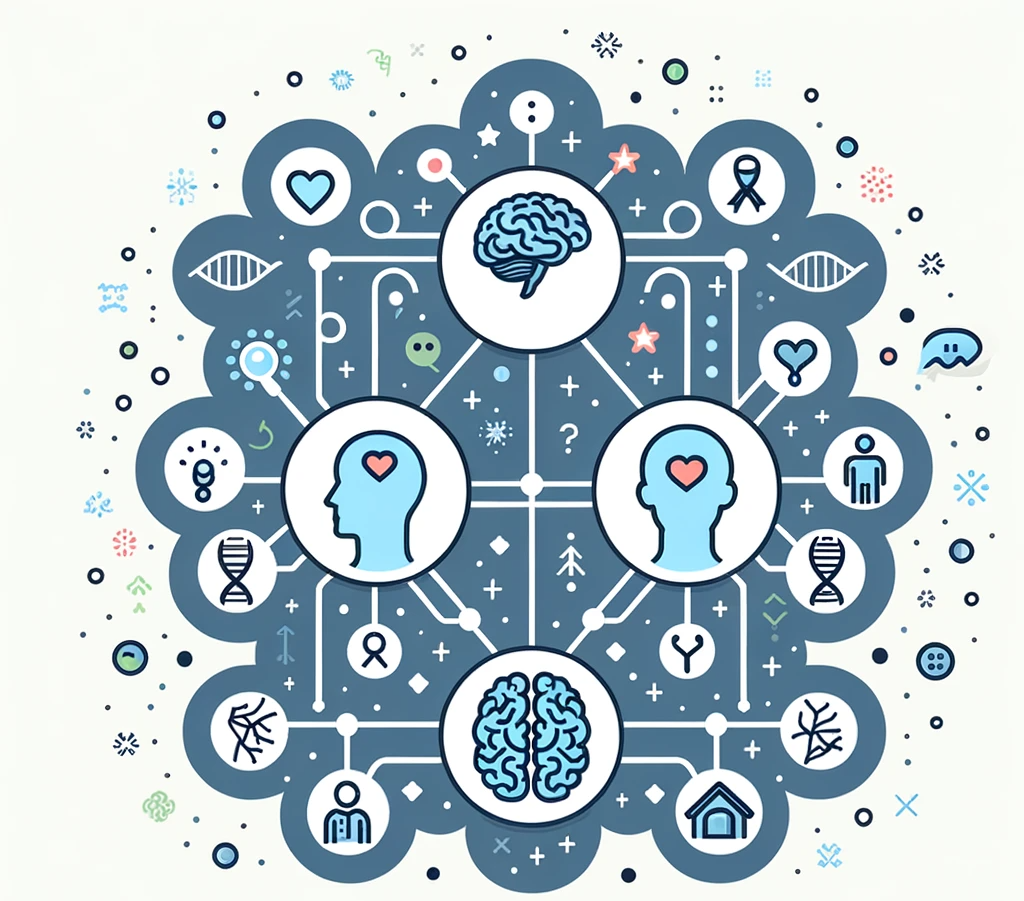The biopsychosocial model presents an integrative paradigm for examining human health and pathology. It posits that biological, psychological, and social factors are not only interrelated but also collectively influence an individual’s well-being. This holistic approach challenges the reductionist view of health prevalent in traditional biomedical models.
Emerging as a pivotal theory in the late 20th century, the biopsychosocial model has transformed our understanding of health and disease. It proposes that the integration of biological, psychological, and social dimensions is imperative to comprehensively understand and effectively address health-related issues.
Biological Dimension
- Overview: This dimension encompasses genetic predispositions, biochemical imbalances, and physiological abnormalities.
- Implications: A thorough comprehension of biological factors is fundamental in diagnosing and formulating treatment plans for diseases with a physiological origin.
Psychological Dimension
- Overview: This aspect deals with cognitive functions, emotional states, and behavioral patterns.
- Implications: Insight into psychological factors is critical in managing mental health disorders and behavioral issues, employing various therapeutic modalities.
Social Dimension
- Overview: This facet involves societal, cultural, and familial influences on an individual’s health.
- Implications: Recognition of social determinants is crucial in public health policy formulation and in understanding health behaviors in diverse populations.
Interplay of Dimensions
- The model underscores the synergistic interaction among biological, psychological, and social factors.
- Case Study Analysis: For instance, a genetically predisposed individual to depression may experience exacerbated symptoms due to chronic stress (psychological) and insufficient social support (social).
Critical Evaluation
- Complexity and Practicality: Critics point out the model’s complexity and the challenge it poses in clinical applicability.
- Guideline Ambiguity: The model’s broad framework sometimes lacks specificity in treatment protocols, necessitating discerning clinical judgment.
Clinical Application
- Holistic Treatment Strategies: The model advocates for treatments encompassing pharmacological interventions, psychotherapeutic techniques, and socio-environmental modifications.
- Personalized Healthcare: It endorses a patient-centered approach, tailoring treatments to address individual biological, psychological, and social contexts.
The biopsychosocial model offers a paradigm shift in understanding health and illness, advocating for a multidimensional approach. It emphasizes the need for a nuanced appreciation of the complex interplay between biological, psychological, and social factors in the realm of healthcare and psychological practice.
Biological factors include your genetics, brain chemistry, and physical health conditions. For instance, if there’s a history of depression in your family, you might have a higher genetic predisposition to experiencing depression yourself. Hormonal imbalances or brain injuries can also impact your mental health.
Psychological factors encompass your thoughts, feelings, and behaviors. For instance, if you have a negative self-image, it might lead to feelings of depression or anxiety. Your coping mechanisms, like how you handle stress or adversity, are also psychological factors. These can significantly influence your mental health and your reactions to different situations.
Social factors include your relationships, community, cultural background, and economic status. For example, if you’re living in poverty, the stress and challenges associated with it can affect your mental health. On the other hand, a supportive family and friend network can provide a buffer against mental health issues.
Absolutely. Let’s consider diabetes. Biologically, genetics and bodily functions play a role. Psychologically, how a person manages stress can affect their blood sugar levels. Socially, access to healthcare and healthy food options in their community can impact their ability to manage the condition.
While widely accepted and used, it’s important to note that some critics argue it can be too broad, making it challenging to pinpoint specific treatment strategies. However, most agree that it offers a more holistic view of health than models that focus solely on biological factors.
By considering all three factors, therapists and healthcare providers can tailor treatments. For example, treating depression might involve medication (biological), cognitive-behavioral therapy (psychological), and community support or family therapy (social).
Yes, it shifts the focus from viewing health issues as solely biological or psychological problems. It recognizes that a range of factors, including societal issues, contribute to health and wellbeing.




